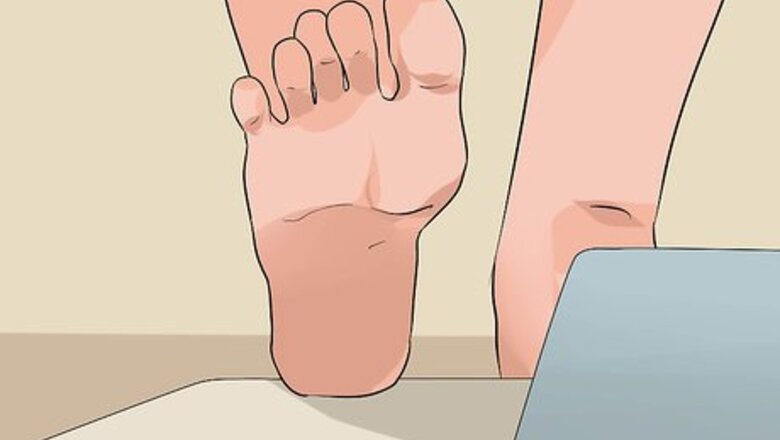
views
Using the Track Starting Position
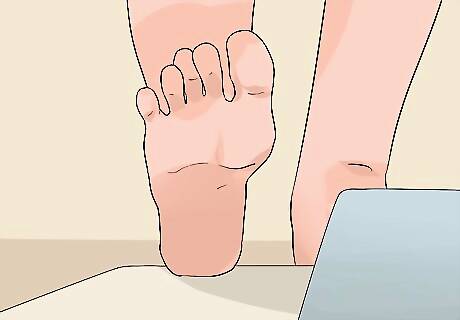
Step carefully onto the starting block. You will be facing the pool, with both of your feet facing forward. Quickly assess and acquaint yourself with the feel of the block. Make sure you feel completely steady before continuing.
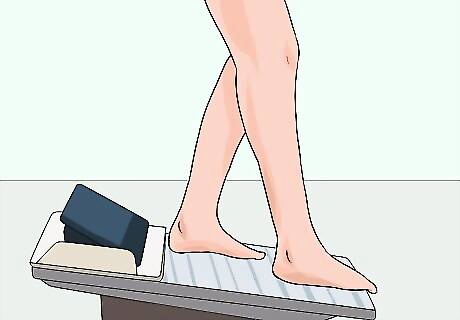
Place one foot in front of the other. It is often recommended that you put your strong leg in the back position, with toes facing straight ahead. However, try experimenting to see which leg forward works best for you. Regardless of which leg you lead with, make sure your feet are approximately a shoulder width apart on the block.
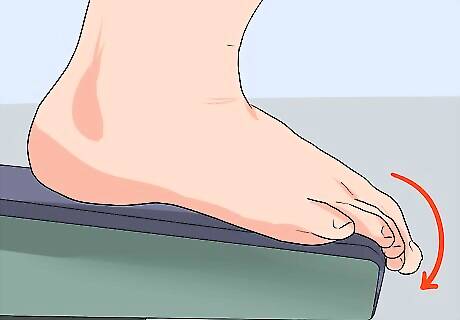
Curl the toes on your forward leg over the edge of the block. By curling your toes over the edge, you will be able to push off the block with maximum force. Make sure your weight is distributed evenly between your front and back legs to ensure your stability.
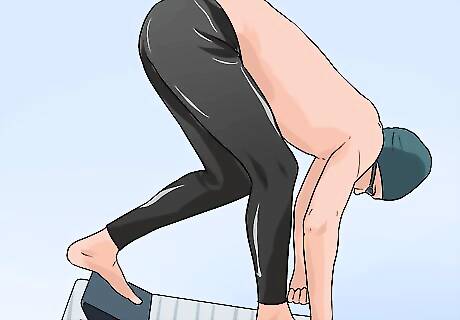
Crouch down and tuck your head close to your knees. Make sure your head is down, with your chin resting on your chest, and positioned directly between your knees. Keep your forward knee positioned directly over your toes and your hips positioned directly over your heels. This will help to ensure your center of gravity is positioned at the edge of the block, resulting in the fastest reaction time.
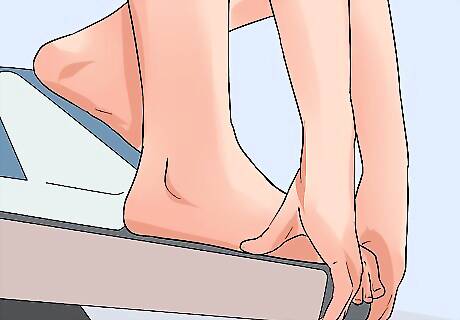
Stretch your arms forward and grab the front of the block. Use both hands to grasp it. You will have one hand positioned on each side of your forward leg. Grasp the block with all of your fingers and your thumbs, which will help you generate the most force. You can rest your thumbs on the top of the block or wrap them in front of it, whichever you prefer. To generate the most power, it is often recommended that you wrap your thumbs in front.
Using the Grab Starting Position
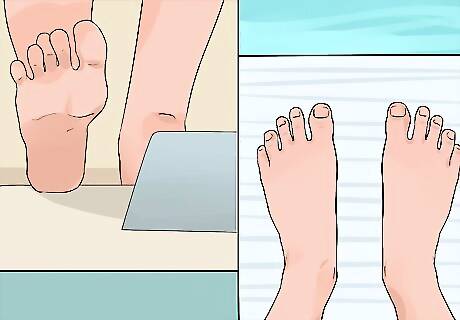
Step carefully onto the block. Keep both of your feet facing forward, with your entire body facing the pool. Do a quick assessment of the block and get acquainted with the feel of it. Make sure that you feel completely stabilized before moving into the next position.
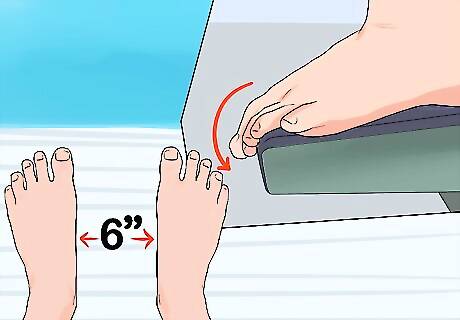
Stand on the block and curl your toes over the edge of the block. You should place your feet approximately 6 inches apart. Make sure your weight is evenly distributed between your two legs to ensure your stability. Keep your knees slightly bent.
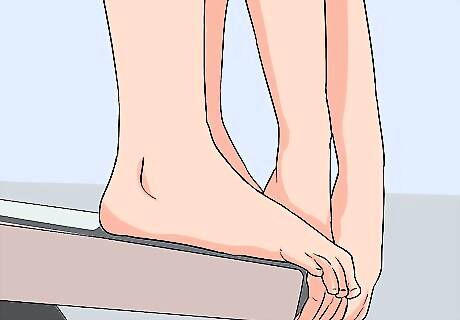
Stretch your arms forward and grab the front edge of the block. You can place your hands inside or outside of your feet, whichever is most comfortable for you. You should be leaning forward slightly.

Keep your head positioned between your knees. You want your head tucked as close to them as possible. Your chin should be resting on your chest. You are now in a position of dynamic stability, with your center of gravity allowing you to move forward as rapidly as possible.
Finalizing Your Starting Position
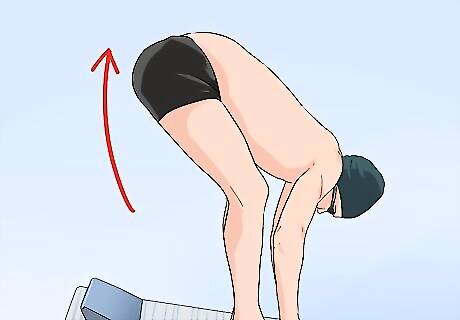
Lift your hips. Both the track start and the grab start require that you lift your hips as high as you can for best results. Position them as close to the edge of the block as you can. Essentially, your rear should be situated as high in the air as possible. Doing this, along with tucking your head close to your knees, will help you position your center of gravity and give you the best advantage for a fast reaction time.
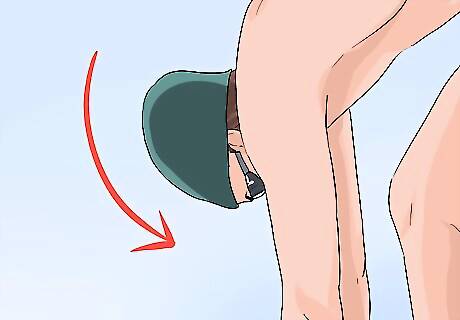
Position your head so that it’s down and looking slightly backward. This will help you keep your goggles on after you hit the water. Losing your swimming goggles during a race can completely throw you off.

Get into position and be as still as possible. The race will not be started until all of the competitors are ready, completely still and in starting position. Taking too long to get in a ready position or falling from the block before the official start can result in disqualification.

Close your eyes and wait for the sound of the start beeper or pistol. Closing your eyes while waiting for the beeper is often recommended because it will result in a faster reaction time. By closing your eyes and focusing on the sound of the beeper, you are removing one of your senses causing the other one to be slightly heightened. This will increase your reaction time to the sound of the beeper. When practicing, work on increasing your reaction time to the sound of the actual beeper. Practicing will help you to truly develop this skill.
Pushing Off
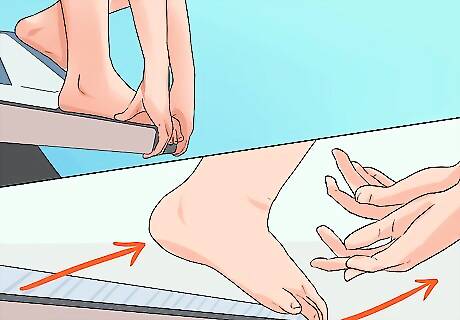
Push off with your hands and legs simultaneously. Pushing off with your hands will tilt your body in the ideal position to thrust with your legs. You want to “explode” upward and outward with your feet and legs when you push off, since you need to generate as much force as possible. Just as your feet are leaving the block, use your curled toes to give yourself a final push to propel you forward and downward into the water.
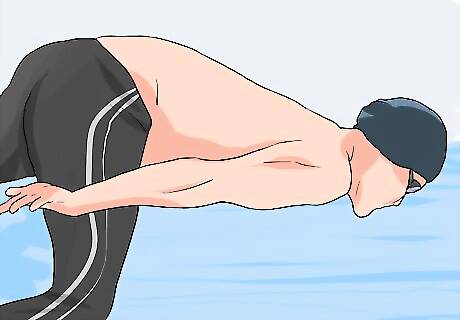
Throw your arms forward into the streamline position as you push off. Use the momentum you create by pushing off with your hands to throw your arms forward into this position. Ideally, you want to be able to “explode” from a bent body position into a streamlined body position in about 1.5 seconds. Look up slightly as you push off. This will force your body to follow the direction of your head.

Tuck your head down and push your hips up. You need to do this as soon as your feet leave the block. You want to dive forward with your head between your arms, looking slightly backward. This will get your body moving downward into the water. It will also help you keep your goggles on once you make impact.
Making Impact
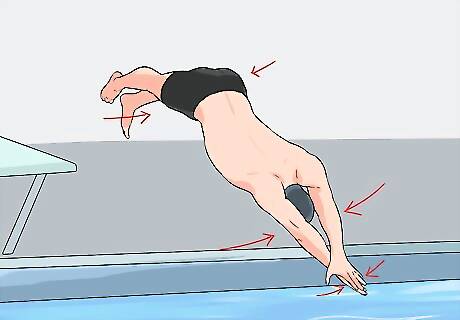
Maintain the streamlined position after push off. As soon as you push off you will be snapping quickly into the full streamline position. Maintain this position before entering the water by locking all of your major joints - ankles, knees, hips, wrists, elbows, shoulders and neck. Hook your thumbs together to keep your arms in the streamlined position once you hit the water.

Remain in the streamlined position when you hit the water. Upon impact you should have your feet close together, toes pointed, buttocks tight, chin resting on your chest, eyes looking downward and your arms locked straight behind your ears.
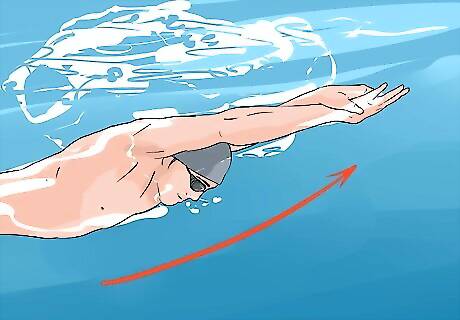
Lift your hands and head slightly after you hit the water. You will still be holding the “hands on” streamlined position until you are just about to resurface and begin swimming.
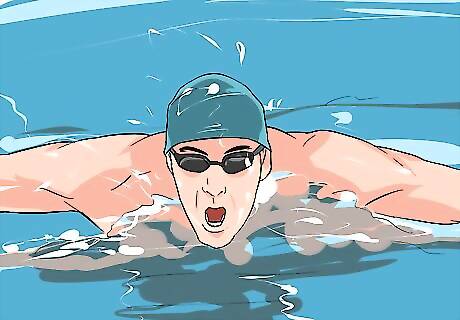
Blast to the surface and start swimming. As soon as you hit the surface go from the streamlined position right into your swimming stroke. The momentum you’ve built up will make your first few strokes strong and powerful.



















Comments
0 comment